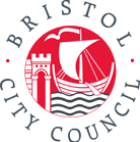Review of 2015-16: Child Injury Health Integration Team
Dr Julie Mytton, Director of the Child Injury Health Integration Team (CIPIC HIT) gives an update of the HIT's activities in 2015-16.
- 6th May 2016
Dr Julie Mytton, Director of the Child Injury Health Integration Team (CIPIC HIT) gives an update of the HIT’s activities in 2015-16.
The Child Injury Prevention and Injury Care HIT
works to reduce the number of unintentional injuries to children across the
Bristol area. We aim to improve the outcome for patients when those injuries do
happen, and reduce the burden that avoidable childhood injuries place on NHS
resources.
Our third conference took place on 17 March 2016, and
included prevention, care and rehabilitation presentations from practitioners
on the front line. Over 60 people attended, from a range of professions and
educational fields.
Our burns and scalds theme is driven by the Healing
Foundation Children’s Burns Research Centre. The SILKIE study looks at the
feasibility of using low-friction sheets to improve the success of
skin-grafting after a burn. We are also setting up a study into the early detection
of infection in burn wounds, using SMART dressings. This work follows MISTIC,
an observational study that examined the normal physiological response to small
to moderate burns in young children. We have also been looking, with parents,
at the information that they need at different times, after a major childhood
burn injury. We have been working with the fire and rescue service to find out
how children and families behave in house fires and exploring fire safety
education. We are keen to develop this partnership.
We are leading a feasibility study on an intervention to
prevent post-concussion syndrome in young children visiting emergency
departments following a head injury. In June 2015 we hosted a child head
injuries research meeting, inviting a multidisciplinary group to map interests,
research and plans. Participants gained a clearer understanding of local
research expertise and opportunities to collaborate over sports-related head
injuries. We also had a visit from the NIHR Brain Injury Healthcare Technology
Collaborative, to talk about head injury prevention.
We are continuing to develop and test paediatric hospital
care pathways to improve management of open tibial fractures. A large
trampolining centre has opened in north Bristol, so the HIT is monitoring
injuries presenting at local children’s emergency departments. We have also
started to work with the British Red Cross to explore patient’s and carer’s
information needs prior to attending an emergency department or minor injuries
unit.
There is genuine wider interest in the HIT model of
integrating child injury prevention, care and rehabilitation. We have been
asked to present our model at meetings in Wessex, Bristol and Exeter.






